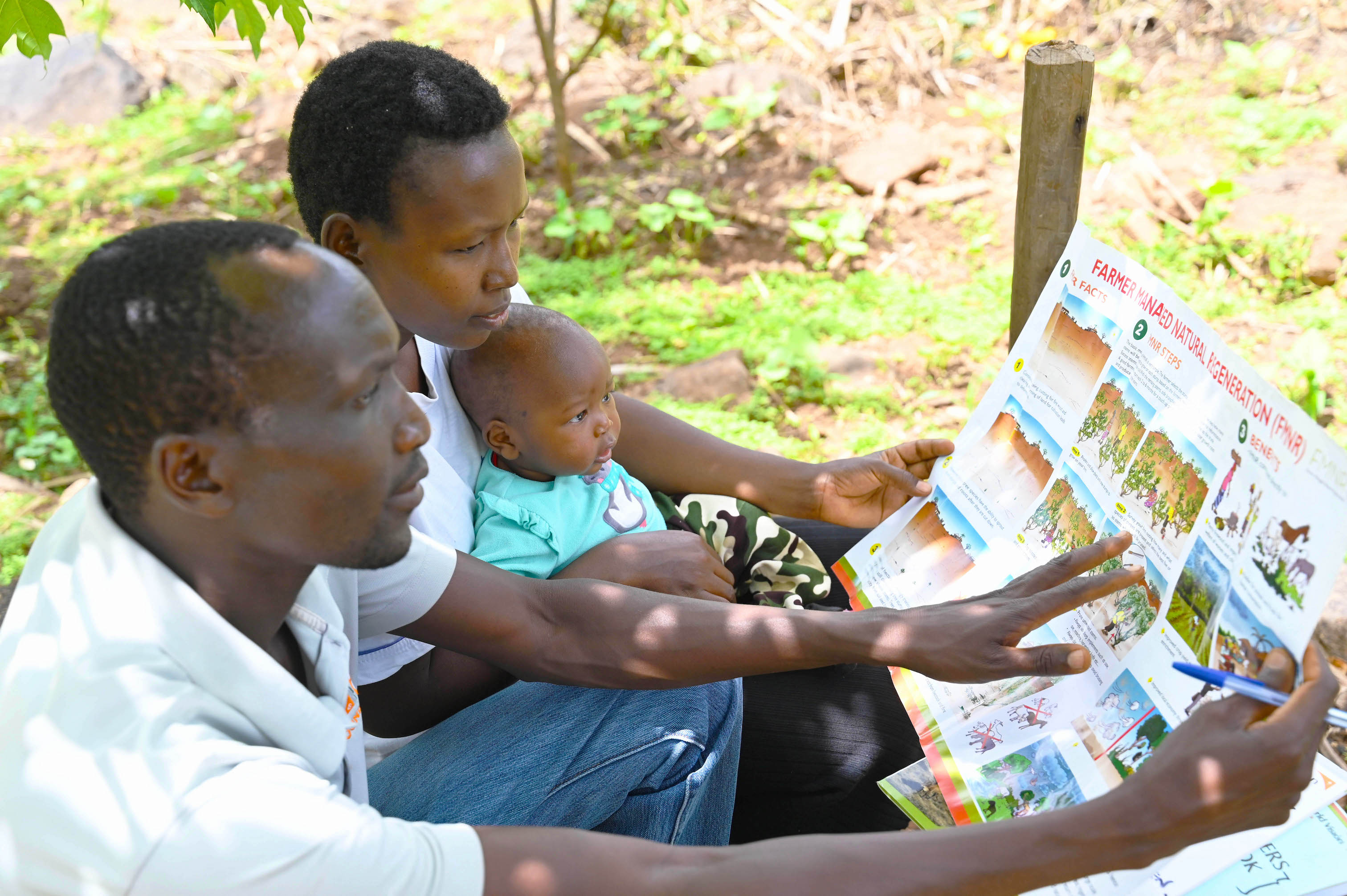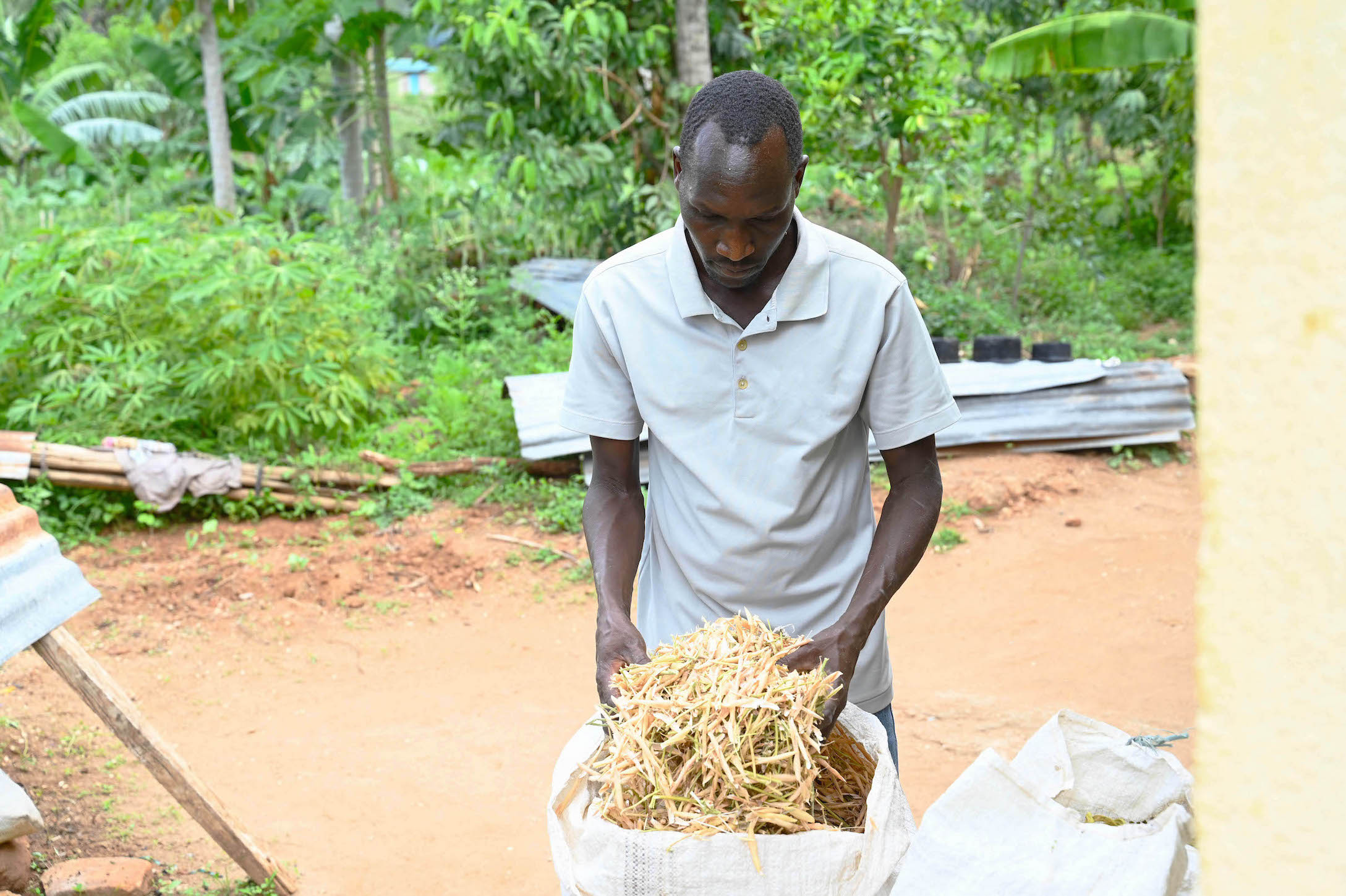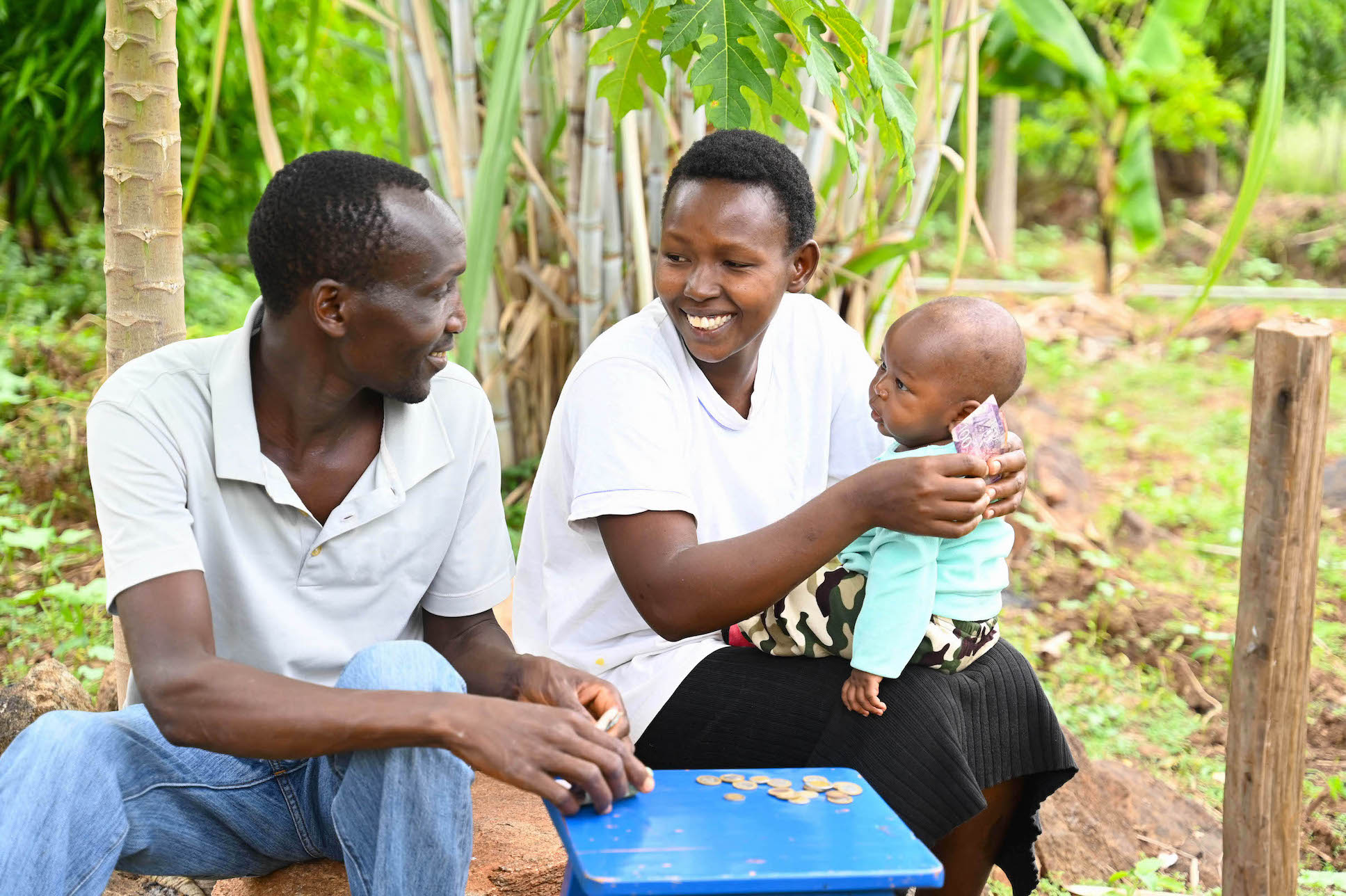Trees offer sustainable livelihoods for families in Elgeyo Marakwet, Kenya
By Hellen Owuor, Communications Specialist (CRIFSUP), World Vision Kenya
At Kapterit village in Elgeyo Marakwet County, resides Reuben, a 33-year-old farmer, with his wife Anita and their five-month-old baby.
Having relocated to the village in 2019, Reuben initially cleared the farm of indigenous trees, intending to replace them with exotic ones.
"However, this led to the land becoming bare, causing increased wind erosion and rapid soil drying, which destroyed my crops and mango trees. Additionally, fetching water for irrigation became costly. That was until I discovered the technique of restoring indigenous trees through World Vision," Reuben explains.
In May 2022, he joined over 1,000 lead farmers who received training on the Farmer Managed Natural Regeneration (FMNR) approach under World Vision’s Central Rift Farmer Managed Natural Regeneration Scale Up Project (CRIFSUP) that is funded by the Australian Government, through the Department of Foreign Affairs and Trade (DFAT).
He later imparted the knowledge to his wife Anita and embarked on embracing the FMNR approach in their home, so as to increase tree cover in their land.

"After the training, I realised my mistake of clearing the land and recognised the numerous benefits of indigenous trees. Even during droughts, they remain resilient. Utilising the skills gained, I fenced my farm, identified tree stumps of indigenous trees to be regenerated and adopted proper pruning techniques," he shares.
Reuben had prior knowledge of tree pruning but had been doing it incorrectly.
He explains, "I used to prune from the upper side of the branch, downwards. Additionally, I would dispose or burn the pruned branches. Thanks to World Vision, I have gained enlightenment through the FMNR training. Sometimes we think we know, but we don't."
Pruning downwards can harm the tree and hinder the regrowth of the pruned branches. The correct practice involves making an upward cut from underneath the branch. This aids faster tree recovery while reducing vulnerability to disease and insect damage at the cut area.
"I derive many benefits from pruning these trees. The pruned parts decay and enrich the soil with humus, thus improving fertility. They also serve as mulch, which retain soil moisture for my crops and prevent them from drying. Moreover, the trees provide fodder, shade and firewood," he highlights.
Anita, Reuben's wife, no longer needs to trek approximately four kilometres to collect firewood.
“The increased tree cover in our compound, resulting from FMNR, has made firewood readily available. I now have spare time for other tasks within the homestead,” she says.
Reuben and Anita practice FMNR on an eighth of an acre in their farmland. They have gone further to ensure that they have trees spread across their entire compound.
They note that they have experienced an increase in crop yields since they began practicing FMNR.
As such, they grow the following crops for both home consumption and income generation: sweet potatoes, spider plant, cassava, sugarcane, kale, beans, pawpaw, mangoes, spinach, bananas, oranges and avocadoes. These nutritious foods offer their family a balanced diet and diverse source of nutrition.

In addition to obtaining fodder from indigenous trees, the couple also utilises sugarcane leaves and bean pods as animal feed.
Nothing goes to waste on their farm, since plant residues serve as animal feed or organic fertiliser.
Consequently, their livestock thrives. Reuben and Anita own over 40 goats and sheep, which generate extra income when sold.
Goats are sold for 8,000 to 10,000 Kenyan shillings (USD 59 to 73), while sheep are sold for 5,000 Kenyan shillings (USD 38).
For livestock feeding, Reuben employs the cut-and-carry method and sometimes tethers the animals to prevent them from damaging his crops as well as the regenerating tree stumps.

"Through the FMNR training, I have learned the importance of preparedness and taking necessary measures for the future. I joined an S4T [Savings for Transformation] group, which has allowed us to save and increase our finances. I can also provide for my family's current needs and secure a better future for my son," Reuben notes.

Initially sceptical about FMNR, Reuben's perception changed after a visit to Joyce Wanyama's farm in Emsea village, who is an FMNR champion facilitated by World Vision. Witnessing her achievements, Reuben was inspired to implement the approach and he has never looked back. His wife Anita is equally passionate and committed to FMNR due to the impact it has made in their lives, which has also strengthened the couple's relationship.
Reuben and his family are among the many people that are increasingly benefitting from CRIFSUP initiatives that are aimed at strengthening food security and the livelihood resilience for at least 11,000 households by 2026 through the FMNR approach as well as other land restoration techniques.